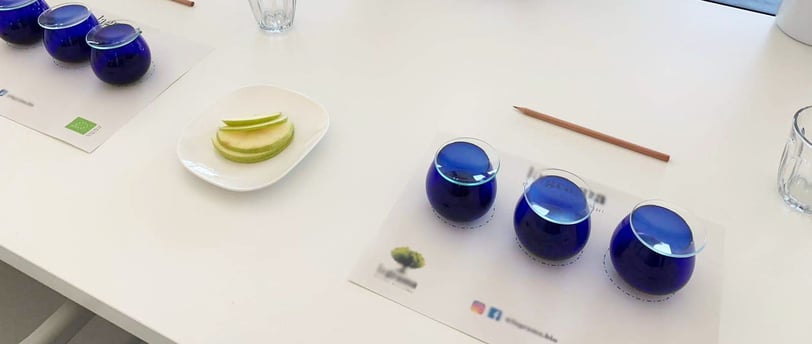The Art of Olive Oil Tasting: A Beginner's Guide
LEARN ABOUT EXTRA VIRGIN OLIVE OILANSWERING RANDOM QUESTIONS ABOUT EXTRA VIRGIN OLIVE OIL
2/7/20242 min read


Introduction:
Olive oil, often referred to as "liquid gold," is not just a cooking staple but a sensory experience that embodies centuries of tradition, craftsmanship, and terroir. Much like wine tasting, olive oil tasting is an art form that allows aficionados to appreciate the nuances of flavor, aroma, and texture present in different varieties of this versatile culinary ingredient. In this beginner's guide, we'll explore the fundamentals of olive oil tasting, from understanding the sensory attributes to conducting a proper tasting session.
Understanding Olive Oil Sensory Attributes:
Before delving into the intricacies of olive oil tasting, it's essential to familiarise oneself with the primary sensory attributes that define its quality:
1. Flavour:
Olive oil can exhibit a wide range of flavours, including fruity, peppery, grassy, nutty, and bitter. These flavours are influenced by factors such as olive variety, ripeness at harvest, and production methods.
2. Aroma:
The aroma of olive oil can be equally diverse, ranging from fresh-cut grass and green herbs to ripe fruits and floral notes. Aroma intensity can vary depending on the freshness and quality of the oil.
3. Texture:
Texture refers to the mouthfeel or viscosity of olive oil, which can range from light and delicate to robust and buttery. High-quality olive oil often has a smooth, velvety texture that coats the palate.
Conducting an Olive Oil Tasting Session:
Now that we've covered the essential sensory attributes, let's explore the steps involved in conducting an olive oil tasting session:
1. Select a Variety of Olive Oils:
Choose a selection of high-quality olive oils from different regions and olive varieties to compare and contrast their flavour profiles.
2. Prepare Tasting Cups:
Pour a small amount (1-2 tablespoons) of each olive oil into separate tasting cups or small glasses. Use opaque or dark-coloured vessels to prevent visual bias.
3. Warm the Oil:
Cup the tasting vessel in your hands to gently warm the olive oil, releasing its aromas and enhancing flavour perception.
4. Assess Appearance:
Examine the color and clarity of the olive oil against a white background. High-quality olive oil should have a vibrant green hue and be free from sediment or cloudiness.
5. Engage the Senses:
Begin the tasting process by swirling the olive oil in your cup to release its aromas. Take a deep inhale and note any distinctive aromas present.
6. Taste and Evaluate:
Take a small sip of olive oil and allow it to coat your palate. Pay attention to the flavour profile, noting any fruity, peppery, bitter, or grassy notes. Consider the overall balance and complexity of the oil.
7. Consider Texture:
Evaluate the texture of the olive oil by observing its mouthfeel. Is it light and delicate or robust and creamy? A high-quality oil should have a smooth, lingering finish.
8. Cleanse the Palate:
Between tastings, cleanse your palate with water and plain crackers to neutralise flavours and prepare for the next sample.
Conclusion:
As we conclude our exploration of the art of olive oil tasting, it's evident that this sensory experience offers a deeper appreciation for one of the world's most cherished culinary treasures. By honing your palate and sharpening your senses, you can unlock the hidden complexities and nuances present in every drop of olive oil, transforming a simple tasting into a journey of discovery and delight. Whether enjoyed drizzled over fresh greens, crusty bread, or grilled vegetables, olive oil invites us to savor the essence of the Mediterranean lifestyle and the rich bounty of the olive tree.
